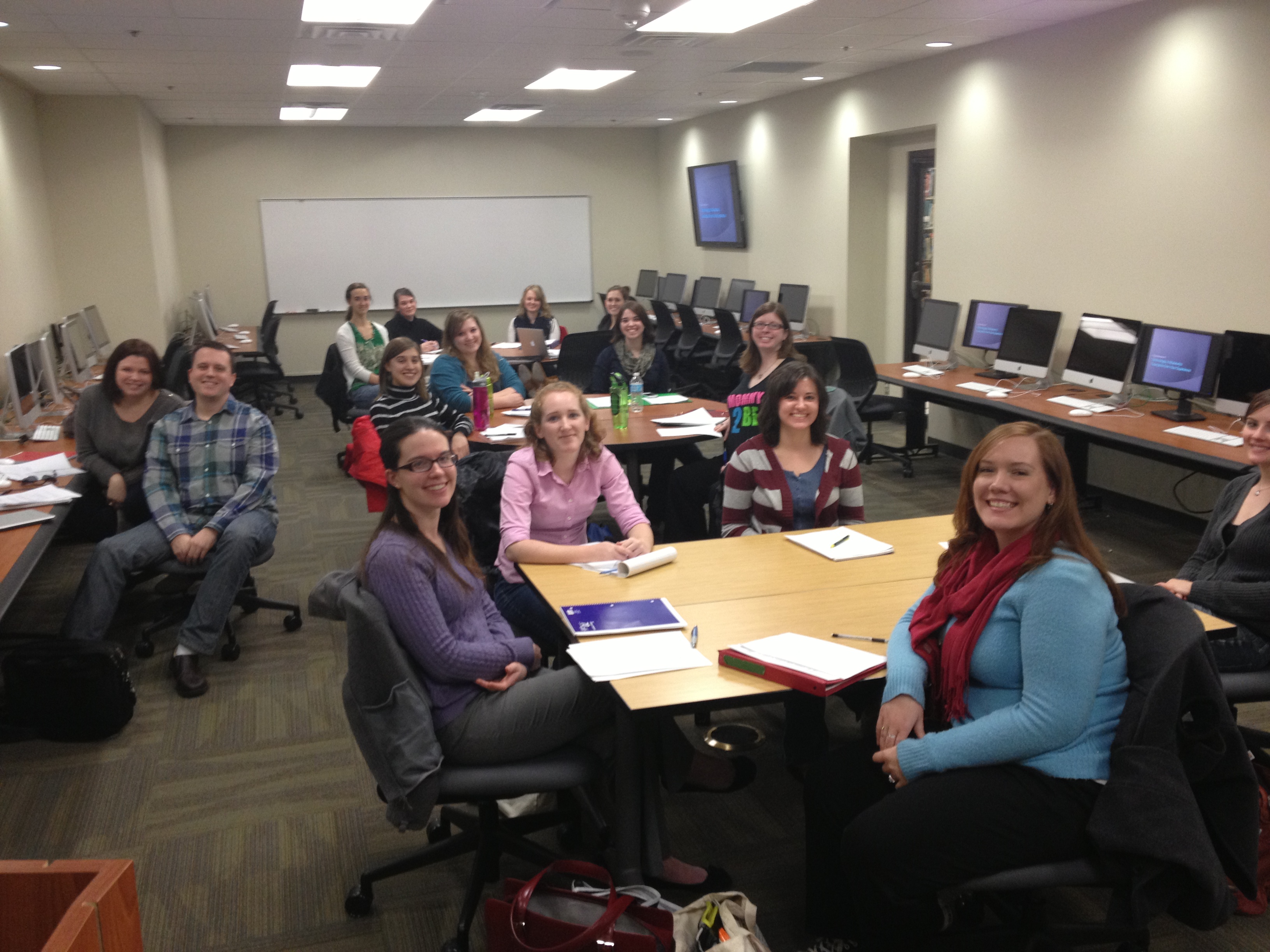
Long-time readers of our blog may remember this post, wherein we unveiled a new venture for the Digital Projects Group: implementing, hosting and teaching a graduate course on technology and outreach for museums, archives and libraries. We’re now heading into the final three weeks of the course, and we thought an update was in order.
The students of MST 5327: Technology and Outreach in Museums have come a long way from the group of fifteen technology neophytes that started class in January. On their initial surveys, I found a wide range of attitudes regarding technology, but most admitted they were somewhere on the “afraid of it, don’t trust it” end of the spectrum. Several brought significant experience with technology with them into the course, and all expressed an interest in enhancing technological skills that they felt would be critical to their success in the museum field.
The first few weeks of class focused on lectures and background information on the idea of technology in museums. Topics covered included the types of technology utilized by museums (from exhibit display to collections databases), the theory behind the use of technology in museums, and the promise and perils of using technology to engage visitors. Lively discussions on technology’s ability to both enhance and derail the visitor experience were held each week, and students were encouraged to seek out examples of how museums are using high- and low-tech solutions to visitor engagement.
From the beginning of the course, students were introduced to the use of several free, Web-based tools that will aid in their development as museum professionals. Services like Evernote, Google Drive, Prezi and WordPress were all introduced very early on in the course, giving the students a chance to explore how museums of any size can take advantage of free (or almost-free) software solutions to make their museums run smoother. The course blog (available for all to read here) became a place for students to respond to focused readings, begin conversations among their colleagues, and post reactions to current events in the museological field. All of these techniques are expected to give them a firm footing on some of the developments in Web-based tools available to them upon their graduation in the coming weeks and months.
After a full session of training and orientation to the scanners and software of the Riley Digitization Center, the students were assigned into teams and turned loose to explore the materials gathered for the course. Focused on the general theme of World War I, the teams were each given a specific focal point and told to curate items for a digital collection that explored one of three themes:
Team Churchill: the impact of the war on religion
Team Foch: the impact of the war on popular culture
Team Pershing: the impact of the war on Waco as embodied by the U.S. military
Each team was given access to a number of archival collections drawn from special collections on campus, and they spent several sessions poring over the assorted archival papers, piles of sheet music, and 1917-1918 Waco newspapers looking for materials to support their theses. Scanning commenced in the following weeks, as did the addition of materials into a special digital collection that will be made available to the public at the close of the semester.
A guest lecture on the always-engaging topic of copyright was delivered by Billie Peterson-Lugo, the Baylor Libraries’ resident expert. Billie’s presentation introduced the students to the challenges of presenting archival materials that go beyond the year 1923 – when materials are considered to be in the public domain – and how to make decisions that place materials into categories of risk (low, medium and high) with regard to copyright status. The students’ eyes were opened to the inherent difficulties of working with the overlapping, byzantine layers of federal and state copyright standards, but they did learn the simplest answer regarding copyright questions: “It depends.”
Spring break and a trip to the Texas Association of Museums’ annual conference in Beaumont took two weeks out of the mid-semester, and a two-week discussion of the basics of marketing in the year 2013 were added into the mix as well. Students discussed the nature of public relations in the Twitter era, why the basics of marketing still matter, and how to keep people’s attention in a world where advertising messages are plastered on almost every conceivable surface.
And now, as the teams complete their scanning and metadata entry, the semester is coming to a rapid close as they prepare for their final presentations. These professional presentations (which are open to the public) will be held on May 1 at 1:00 in the Armstrong Browning Library’s theater, followed by a reception in the Cox Reception Hall. The presentations will focus on each team’s marketing/outreach plan they created to promote their digital collections to a specific target audience. I will also provide an overview of the course, the items digitized by the students, and what this course has meant in terms of their development as burgeoning museum professionals.
When we started the discussions about this course more than a year ago, Dean of University Libraries Pattie Orr was excited, supportive and encouraging of a new opportunity to train Baylor University graduate students for service in a field that impacts the lives and spirits of millions of Americans each year. From an instructor’s viewpoint, I can say that the energy, skills, passion and drive exhibited by these students this semester have been a joy to behold, and if their performance in this course is any indication of the future state of American museums, we are all in terrific hands.
In closing, I encourage anyone in the Waco area to stop by the final presentations on May 1st. It will be an excellent opportunity to see new scholarship, excited young professionals, and a beautiful special collection library all at once.